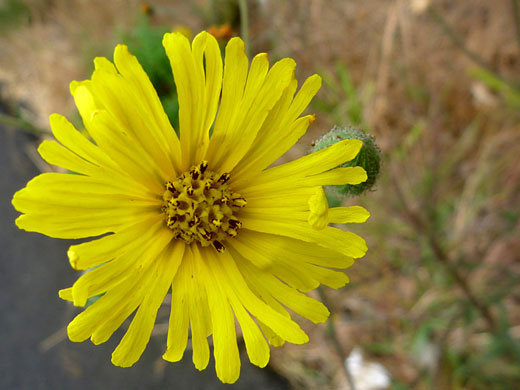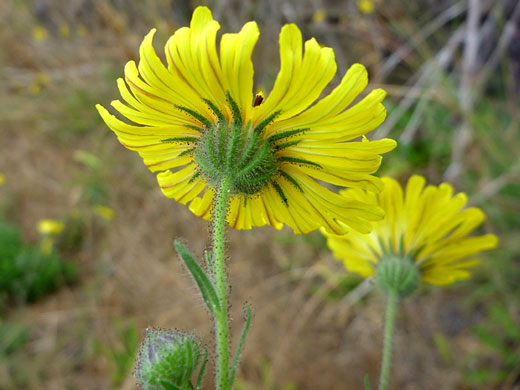Anisocarpus Madioides, Woodland Alpine-Tarplant
Plants > Wildflowers > Asteraceae > Anisocarpus Madioides
Common names:
Woodland alpine-tarplant, woodland tarweed
Family:
Scientific name:
Anisocarpus madioides
Main flower color:
Range:
Scattered areas of west California, west Washington and extreme southwest Oregon
Height:
Up to 30 inches
Habitat:
Moist woodland and grassland; up to 4,200 feet
Leaves:
Linear to lanceolate or oblanceolate, toothed or entire, glandular hairy, with pointed tips
Season:
April to September
Anisocarpus madioides grows in moist, forested or grassy locations, mostly along the Pacific coast and across the adjoining mountains but also in a few areas further east. Leaves, stem and phyllaries are covered by long, bristly hairs and shorter hair-like glands, topped by dark resin. Leaves are alternate towards the base of the stem, sometimes in little rosettes, and opposite towards the tip. The biggest leaves, at the base, are about 4.5 inches long and half an inch wide.
The composite flowerheads are one inch in diameter, formed of between 5 and 30 disc florets surrounded by around ten ray florets (ranging from 7 to 15), each divided for most of their length into three lobes. Rays are bright yellow, reddish at the base. The five-lobed disc florets produce brownish stamens topped by yellow anthers. There is one phyllary per ray floret, about half as long.
The composite flowerheads are one inch in diameter, formed of between 5 and 30 disc florets surrounded by around ten ray florets (ranging from 7 to 15), each divided for most of their length into three lobes. Rays are bright yellow, reddish at the base. The five-lobed disc florets produce brownish stamens topped by yellow anthers. There is one phyllary per ray floret, about half as long.
All Contents © Copyright The American Southwest | Comments and Questions | Contribute | Site Map





